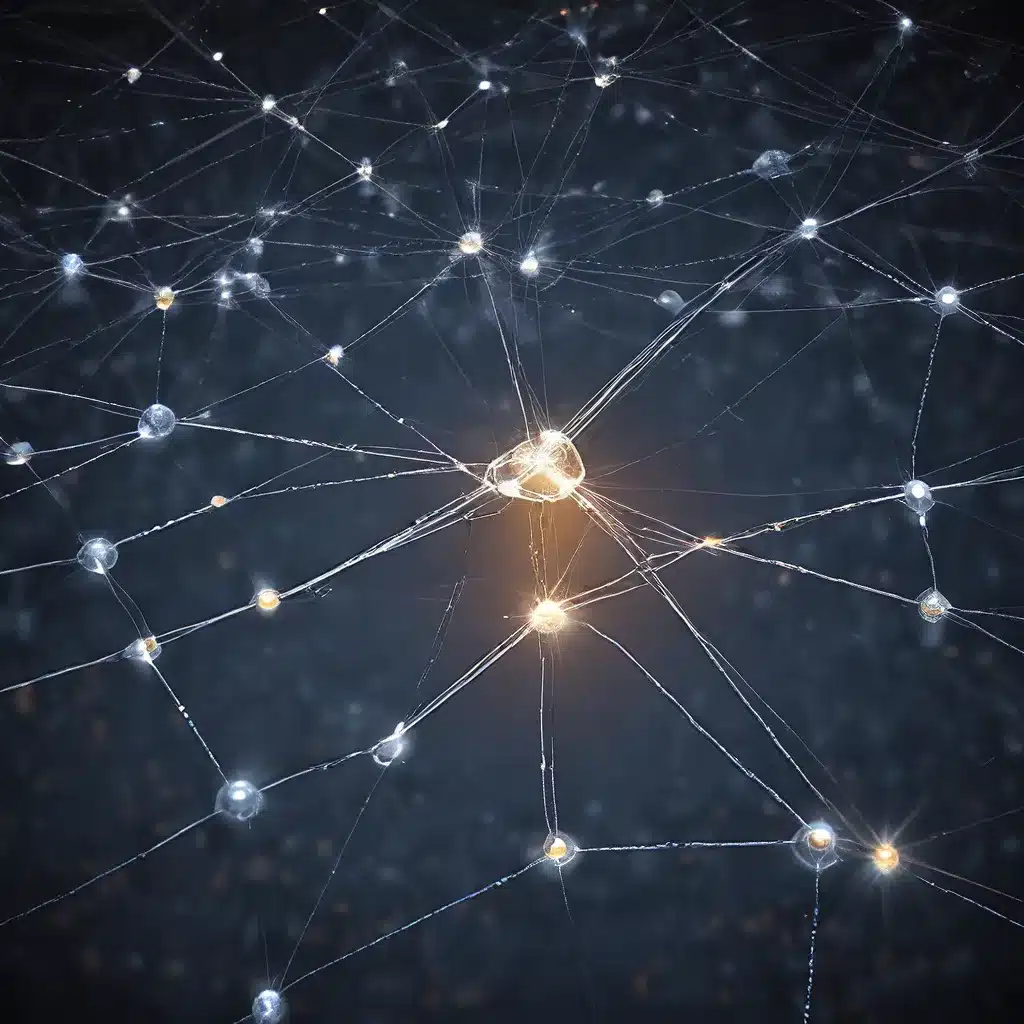
The Rise of Sensor Networks and IoT
Sensor networks have become increasingly prevalent in our modern, interconnected world. These networks of interconnected devices, equipped with sensors, processors, and communication capabilities, enable the collection, analysis, and exchange of vast amounts of data. The advent of the Internet of Things (IoT) has further propelled the growth and application of sensor networks, transforming industries, enhancing decision-making, and improving our daily lives.
As the deployment of sensor networks continues to expand, a crucial challenge emerges: energy management. Sensor nodes, often battery-powered or relying on limited energy sources, must operate efficiently to maximize their lifespan and ensure the continuous functioning of the network. Distributed algorithms have emerged as a promising solution to address this challenge, enabling coordinated energy management strategies across the network.
Understanding Sensor Network Topologies
Sensor networks can be organized in various topologies, each with its own advantages and trade-offs. Common topologies include star, mesh, and hierarchical configurations, each suited to different application requirements and environmental conditions.
| Topology | Description | Advantages | Disadvantages |
|---|---|---|---|
| Star | A central base station communicates directly with sensor nodes. | Simple to implement, centralized control. | Limited scalability, single point of failure. |
| Mesh | Sensor nodes form a decentralized network, relaying data through multiple hops. | Robust, self-healing, high coverage. | Increased complexity, energy-intensive routing. |
| Hierarchical | Nodes are organized into clusters, with cluster heads coordinating data aggregation and transmission. | Scalable, energy-efficient, load balancing. | Overhead for cluster formation and maintenance. |
The choice of topology reflects the specific needs of the sensor network application, such as coverage, reliability, energy efficiency, and security requirements.
Distributed Algorithms for Energy Management
Efficient energy management in sensor networks is critical to ensuring the longevity and reliability of the system. Distributed algorithms offer a decentralized approach to address this challenge, leveraging the collective intelligence of the sensor nodes to optimize energy consumption.
One such algorithm is the Energy-Efficient Clustering Protocol (EECP), which aims to extend the network lifetime by selecting cluster heads based on their remaining energy levels. This approach distributes the energy-intensive tasks of data aggregation and transmission, preventing the premature depletion of individual nodes.
Another distributed algorithm, the Energy-Efficient Sensor Scheduling (EESS) protocol, focuses on duty cycling – the strategic activation and deactivation of sensor nodes to conserve energy. By coordinating the sleep-wake cycles of nodes, EESS ensures that a sufficient number of sensors remain active to maintain network coverage and responsiveness, while the remaining nodes enter a low-power mode to preserve their energy reserves.
These distributed algorithms leverage local information exchange and collaborative decision-making to optimize energy usage across the sensor network, enhancing its overall efficiency and longevity.
Securing Sensor Networks and IoT Devices
As sensor networks and IoT devices become increasingly ubiquitous, the importance of security cannot be overstated. Sensor nodes, often resource-constrained and deployed in remote or accessible locations, are vulnerable to a variety of security threats, such as eavesdropping, node capture, and denial-of-service attacks.
Securing these networks requires a multi-layered approach, addressing both physical and logical security measures. Cryptographic techniques, such as symmetric-key and public-key cryptography, can be employed to ensure the confidentiality and integrity of data transmitted between sensor nodes and the network.
Additionally, secure routing protocols and intrusion detection systems can be implemented to safeguard the network infrastructure and detect malicious activities. The integration of hardware-based security features, such as tamper-resistant modules and trusted execution environments, can further enhance the overall security posture of sensor network deployments.
As the IoT landscape continues to evolve, industry standards and best practices for sensor network security are constantly being updated to address emerging threats and vulnerabilities. Staying informed and proactively implementing these security measures is crucial for ensuring the reliability and trustworthiness of sensor network-based applications.
Sensor Networks and IoT in Real-World Applications
The versatility of sensor networks and IoT technologies has enabled their widespread adoption across various industries, transforming the way we monitor, analyze, and interact with our environments.
In the smart city domain, sensor networks are used to optimize traffic flows, monitor air quality, and manage public utilities, leading to improved resource utilization and enhanced quality of life for citizens. In the healthcare sector, wearable sensors and remote patient monitoring systems leverage sensor networks to provide personalized, real-time data, empowering patients and healthcare professionals to make informed decisions.
The agricultural and environmental sectors have also benefited from sensor network deployments, enabling precision farming techniques, wildlife monitoring, and natural resource management. By collecting and analyzing data from distributed sensor nodes, these industries can make data-driven decisions to improve productivity, sustainability, and ecological conservation efforts.
As the adoption of sensor networks and IoT technologies continues to grow, we can expect to see even more innovative applications emerge, transforming industries, improving our daily lives, and shaping the future of a more connected world.
Conclusion: The Evolving Landscape of Sensor Networks
The rapid advancements in sensor network technologies and the proliferation of the Internet of Things have transformed the way we perceive and interact with our environment. From smart cities to precision agriculture, sensor networks have become an integral part of our modern, data-driven society.
As we move forward, the focus on energy-efficient, secure, and scalable sensor network designs will be crucial. Distributed algorithms, like the Energy-Efficient Clustering Protocol and the Energy-Efficient Sensor Scheduling protocol, offer promising solutions to address the energy management challenges inherent in sensor networks.
Furthermore, the importance of security cannot be overstated, as sensor networks and IoT devices become increasingly ubiquitous. Robust security measures, including cryptographic techniques, secure routing protocols, and hardware-based security features, are essential to safeguarding these networks and the sensitive data they collect.
As the sensor network and IoT landscape continues to evolve, we can expect to see even more innovative applications and transformative impacts across diverse industries. By staying informed and embracing these advancements, we can harness the power of sensor networks to build a more efficient, sustainable, and connected future.